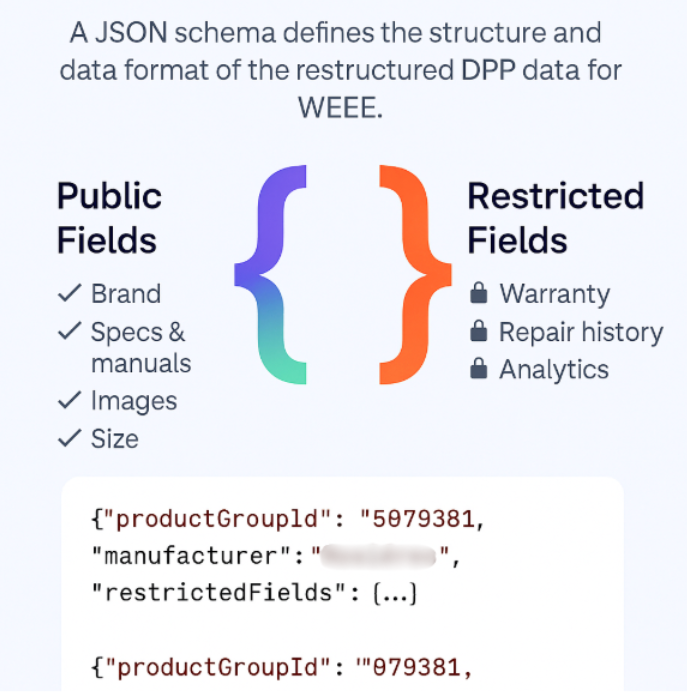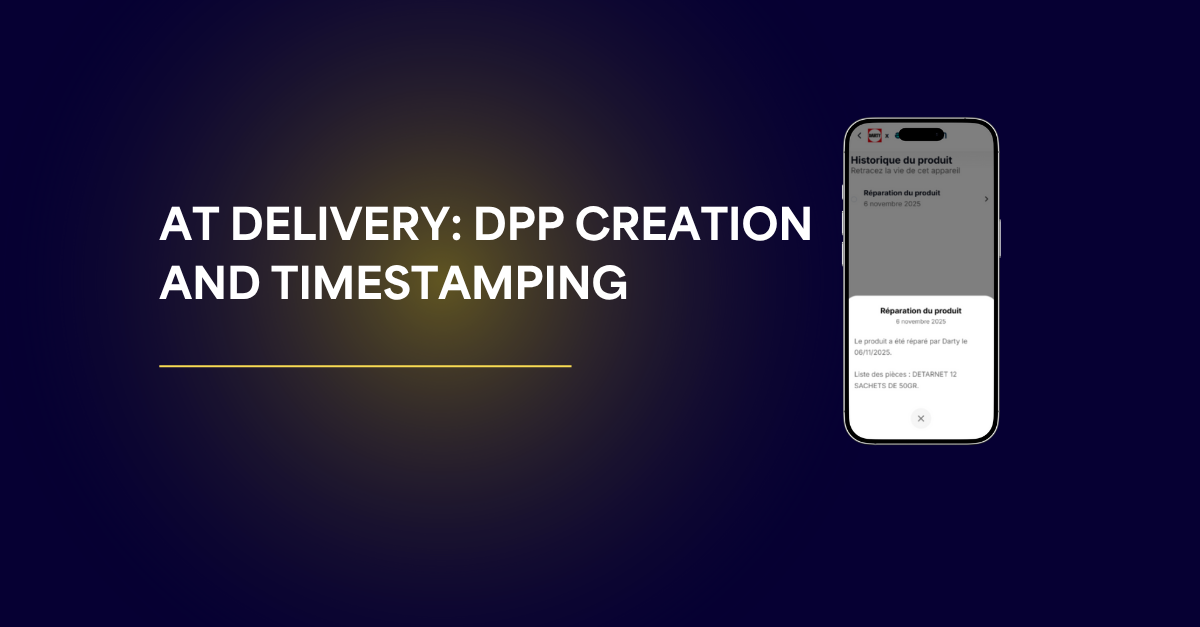As Digital Product Passports (DPPs) roll out across the appliance industry, a key question keeps coming up:
What exactly goes into a passport — and how is it structured?
The answer lies in a new, standardized data format developed by Arianee, in collaboration with partners from the project.
It defines what information should be included, how it’s organized, and who can access it — laying the groundwork for scalable, secure, and interoperable DPPs.
Key Features of the New Format
Each passport is built around two types of data:
- Public fields – visible to everyone
Essential information like product specs, brand, model number, and user manuals is publicly accessible. Anyone scanning the QR code — a customer, technician, or reseller — can instantly view it.
💡 Example of fields:
- Brand & model
- Product category
- Images
- User instructions
- QR code link
- Restricted fields – accessible only to authorized partners
Sensitive or technical data, such as internal factory IDs, warranty extensions, or compliance reports, is only accessible to authorized stakeholders.
This allows operators, brands, or recyclers to collaborate on shared data — without compromising consumer privacy or business confidentiality.
🔐 Example of fields:
- Serial number
- Repair logs
- Environmental scores
- Factory batch data
- Resale history
Why This Matters for the industry
This new schema is more than just a formatting update — it establishes a shared data foundation that allows the entire ecosystem to speak the same language. By defining common fields and structures, it unlocks:
✅ Clearer collaboration between brands, retailers, refurbishers, and recyclers
🌍 Smarter user experiences and increased transparency for consumers
📜 Stronger readiness for upcoming regulations such as ESPR and AGEC
🔗 Seamless, secure, and interoperable data sharing between stakeholders
🧭 A foundation for governance and collective decision-making at scale
By aligning all actors around a common and extensible data structure, the schema ensures that Digital Product Passports can scale with trust, clarity, and flexibility — enabling the right information to reach the right users, at the right time, and in the right context.

Designed for the Real World
This model wasn’t designed in isolation — it was shaped by the operational needs of the project, with direct input from field teams and real-life use cases. It’s already live on select refurbished products and factory lines, and will soon power resale, repair, and recycling flows at scale.
What Comes Next?
- Real-world testing of the DPP format through active deployments, to refine the UX and data structure based on concrete feedback
- Onboarding of new partners to adopt and experiment with the format across different use cases
- Continuous monitoring of the upcoming EU regulatory developments through participation in working groups and coalitions (note: no short-term updates expected on e-waste/DEEE regulations)
- Publication of public documentation to foster industry-wide alignment and facilitate adoption
→ With this data common structure, Digital Product Passports become more than just digital records — they become trusted, actionable tools for a truly circular future.

.png)
.png)

.png)